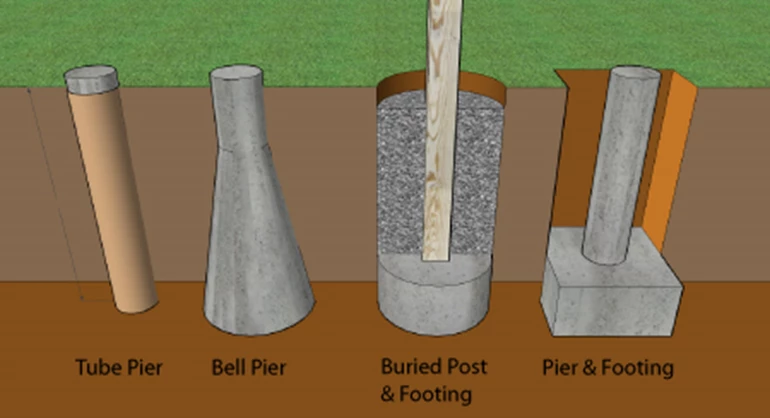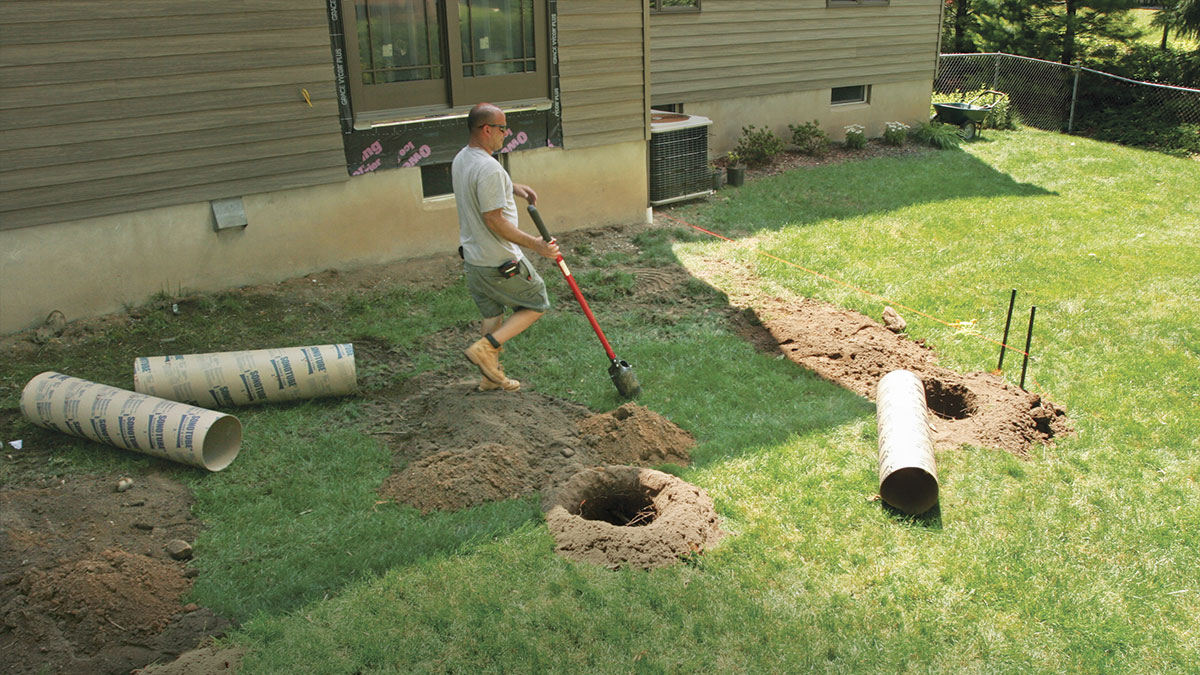Deck Footings Unveiled: Comprehending the Trick Elements of a Trustworthy Deck Framework
Selecting the Right Deck Footings for Stability and Toughness
The longevity and safety and security of your deck depend greatly on the type of footings you choose, as they give the vital assistance and security to endure the test of time. In this conversation, we will certainly explore the different kinds of deck grounds, consider the essential aspects to consider when making a decision, and dig right into the pros and disadvantages of different choices.
Kinds Of Deck Grounds
These footings consist of a round opening filled up with concrete, which supplies a solid foundation for the deck messages. Concrete pier footings are relatively easy to install and offer outstanding stability, making them a popular choice for many deck projects.
These footings are installed by screwing them into the ground, which develops a safe structure for the deck. They likewise enable for easy adjustment and progressing of the deck if required.
Conversely, some building contractors decide for precast concrete footings. These grounds are constructed from resilient concrete and come in various forms and dimensions to accommodate various deck styles. Precast concrete grounds are hassle-free to set up and give a steady base for the deck structure.
Ultimately, one more option is the post-in-anchor ground system. This sort of ground entails driving a steel anchor right into the ground and connecting it to the deck post. It supplies adaptability in terms of positioning the deck posts and is suitable for decks with light-weight structures.
When picking the right type of deck ground, it is necessary to take into consideration elements such as dirt problems, deck load, and regional building ordinance (Deck Footings). Consulting with an expert service provider or architectural engineer can assist make certain the suitable ground is picked for a safe and steady deck
Aspects to Consider When Selecting Grounds
When choosing the proper grounds for a deck, it is important to carefully think about various elements such as soil problems, deck load, and adherence to neighborhood building codes. These elements play a considerable function in making certain the stability and toughness of the deck framework.
Among the key factors to think about is the soil conditions. The sort of soil on which the deck will be developed establishes the kind of footings required. Decks built on sandy or loose soils may call for deeper footings to offer adequate support and stop settling. On the various other hand, decks developed on clay or large soils might require footings that can suit the soil's tendency to expand and contract.
Another essential element is the deck load. The weight of the deck, consisting of the products utilized and any type of prospective live lots such as furnishings or events, should be thought about when choosing footings. The footings need to be created to bear the weight of the deck and distribute it evenly to prevent any kind of architectural issues or failings.
Last but not least, adherence to neighborhood building regulations is paramount. Building ordinance vary from area to area, and it is essential to adhere to the particular demands set by the local authorities. Deck Footings. These codes guarantee that the deck is constructed safely and meets the essential standards for architectural stability and load-bearing investigate this site capacity
Concrete Footings: Benefits And Drawbacks

When made use of as the structure for a deck,Concrete grounds offer numerous benefits and downsides. On the silver lining, concrete footings give exceptional stability and longevity. Concrete is a solid and stiff product that can support heavy tons and endure various climate condition. It additionally has a long lifespan, making it a reliable selection for lasting usage.
An additional advantage of concrete footings is their flexibility. They can be poured right into different shapes and dimensions to fit various deck layouts and arrangements. Concrete grounds can be tailored to fit the particular requirements and requirements of the deck structure.
Nonetheless, there are likewise some downsides to making use of concrete footings. This can raise the general expense of the deck task and may require expert aid.

Helical Piers Vs. Sonotubes: Which Is Better?
In thinking about the structure options for a deck, the comparison between helical piers and sonotubes is crucial in identifying the premium selection. Helical piers, additionally recognized as screw stacks, are steel shafts with helical plates affixed to them. They are turned into the ground making use of hydraulic equipment, supplying a durable and stable foundation for the deck. On the various other hand, sonotubes are cylindrical forms made of cardboard or fiber product that are full of concrete. They are put in an opening went into the ground and supply assistance for the deck.
When it involves security and resilience, helical piers have the upper hand. The helical plates on the piers create a solid grip with the dirt, shifting or stopping any movement of the deck. This is especially beneficial in areas with unstable or shifting dirt conditions. Sonotubes, on the various other hand, rely only on the concrete filling up for security, which may not use the same level of stamina and resistance.
In regards to setup, helical piers are fairly simpler and faster to mount contrasted to sonotubes. The hydraulic equipment made More Help use of to twist the piers right into the ground makes sure a quick and efficient procedure. Sonotubes, on the various other hand, need excavating holes and putting concrete, which can be lengthy and labor-intensive.
Furthermore, helical piers are a more versatile alternative. They can be made use of in different soil problems and can be readjusted or strengthened if required. Sonotubes, on the other hand, might call for additional support, such as rebar, in specific soil conditions or areas with high tons needs.
Picking the Right Footings for Your Deck's Measurements
For optimum structural honesty, it is vital to thoroughly select the proper grounds that straighten with the dimensions of your deck. The dimensions of your deck, including its length, size, and height, play a considerable function in identifying the type and size of grounds needed.
When choosing grounds for your deck, it is essential to consider the load-bearing capability of the soil. The weight of the deck, integrated with the weight of any furnishings or people on it, applies a substantial force on the grounds (Deck Footings). For that reason, it is critical to choose grounds that can adequately sustain this weight check here without sinking or shifting with time.
The size and form of the grounds ought to likewise be taken into consideration. Larger decks with higher dimensions need bigger footings to offer adequate security and support. The shape of the grounds, whether they are square or round, depends on the style and layout of the deck. Additionally, the depth at which the grounds are installed should be established based on the frost line in your area to prevent any heaving or changing as a result of freezing temperature levels.
Conclusion
In verdict, choosing the appropriate deck footings is vital for making sure stability and sturdiness. Factors such as the kind of footings, the deck's dimensions, and the pros and cons of various choices should be thought about.
These grounds consist of a cylindrical hole filled up with concrete, which provides a solid structure for the deck messages. Concrete pier footings are relatively easy to install and supply outstanding stability, making them a popular option for many deck projects.
Precast concrete grounds are hassle-free to mount and offer a steady base for the deck framework.
It uses adaptability in terms of positioning the deck posts and is suitable for decks with lightweight frameworks.
Concrete grounds provide numerous benefits and drawbacks when utilized as the structure for a deck.